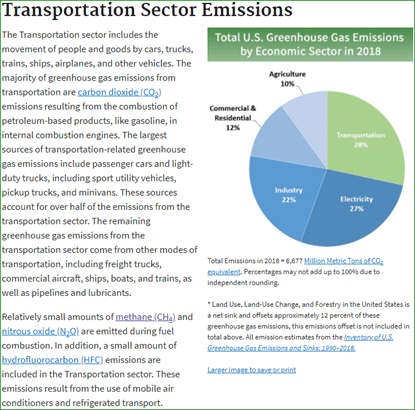
Earth Day is just a couple of weeks away and the theme this year is Restore Our Earth™. The team at Energility was asked how they view their work as building towards that, as well as actions they take in their personal lives to Restore Our Earth™. The following article was written by Jeff Lucky, an Energy Consultant – Specialist with Energility, about his process for purchasing a vehicle that was better for the environment.
The idea behind most environmentally friendly vehicles is to purchase a hybrid or an electric vehicle. This option may not work for everyone because of cost, access to charging stations, or the ability to have charging equipment at home. Jeff discusses another option for a vehicle – a PZEV vehicle.
Have you ever thought about your driving habits and how the emission from your vehicle contribute to greenhouse gas (GHG)? I have, considering the environmentally conscious person that I am.
I get it – we all have busy lives, commutes to work are ramping up, in-person learning at our schools is beginning to become the norm again (while still being mindful of COVID-19 with safe distancing, masks, and vaccinations in place) and the mobility and freedom of jumping in the car or SUV to visit a local eatery or shopping mall put us in the community and on the highway emitting potentially harmful gases like nitric oxide, carbon monoxide, and nitrogen dioxide, all of which contribute to high levels of fuel emissions (smog and acid rain production) in standard vehicles. These emissions, while not directly causing global warming, are precursors to greenhouse gas, ozone damage and global warming.
When I went to purchase a new vehicle, those concerns played a huge part in my decision-making process to offset as best I could and in my small way the detrimental effects that getting around obviously does to the environment on a global scale. Simply put my need and urge to drive was creating a non-sustainable condition that is currently putting the health of our plant in a tailspin that will be hard to reverse for generations to come.
My research directed me to focus on these possible solutions as I navigated the array of environmentally friendly vehicles: Advanced Technology Partial Zero Emission Vehicles also known as Transitional Zero Emission Vehicles, Battery-Electric Vehicles also known as BEV’s, Hybrid Electric Vehicles or HEV’s, Plug-in hybrid electric cars also known as PHEV’s, Partial Zero Emission Vehicles also known as PZEV’s, Super Ultra-Low Emission Vehicles or SULEV’s, Transitional Low-Emission Vehicles or TLEV’s and Zero-Emission Vehicles also known as ZEV’s.
The decision was not an easy one. Car manufacturing technology now exist, and innovation continues to move forward that allow you and I an opportunity to affordably purchase these atmosphere helping vehicles in the fight to decrease the impact of dirty air on our planet.
I settled on a PZEV, these are extremely clean conventional vehicles. Data reported in Popular Mechanics article “The Green Car You Never Hear About” by Matthew Jancer, reports three distinct elements in the fuel system and one in the exhaust which made this the choice for me: anti-permeation fuel system liners, carbon canister scrubbers, carbon air intake trap, and catalytic converters (Jancer, 2016). A PZEV vehicle actually has three catalytic converters to reduce the emissions (Jancer, 2016). Together, they capture hydrocarbons, nitric oxide, nitrogen dioxide, carbon monoxide, and nonmethane organic gases that off-gas in a non-PZEV vehicles (Jancer, 2016). These benefits contribute to the cleanest-running gasoline-powered car on the market.

The EPA report on the greenhouse gas emissions in different economic sectors states “In 2018 alone greenhouse gas emissions from transportation accounted for more than a fourth of the total United States GHG emissions” (EPA Greenhouse Gas Emissions). We can do something about this. If you are a driver, if you are in search of a new car, used car, or SUV, there are models out there manufactured between 2010-2017 that have the technology built into them already so the next time you go to a car dealership to purchase a vehicle don’t just purchase a car purchase the renewal of clean air for generations to come.